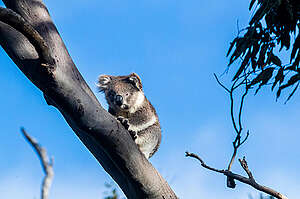Canada’s boreal forest is home to stunning landscapes and a spectacular array of wildlife. But corporate logging giant Resolute Forest Products wants to intimidate and silence people like you fighting to protect forests.

Black bears live in forests across Canada. These omnivores have better eyesight and hearing than humans. They are known to mark trees with their teeth and claws as a form of communication with other bears.|Blackburnian warbler (Dendroica fusca).
These small, insect-eating songbirds have a fiery orange patch on their chests. Once their chicks leave the nest they are known to join flocks mixed with other birds such as chickadees, kinglets and nuthatches. Although they summer in parts of Canada and the U.S., their population is considered vulnerable to deforestation in South America, where they spend their winters.|A Canadian Goose paddles in the water near Cates Park in Vancouver.|Eastern chipmunk (Tamias striatus).
These mammals can be found in eastern and central North America, from the boreal forest to the southern United States. Although they are expert tree climbers, they dig underground nests. The name chipmunk is derived from the Anishinaabe word ajidamoo which translates as “one who descends trees headlong.”|A bull elk, along the Trans-Canada Highway, in Jasper National Park.|Monarch butterfly (Danaus plexippus).
These short lived insects migrate to Mexico each year, but no single butterfly completes the return journey. Instead four different generations are born throughout the year and each completes a segment of the round trip. They can fly at between 20km and 40km an hour, and make use of updrafts of warm air called thermals to rise high into the air and slowly glide down. This endangered species has been negatively impacted by herbicides, human disturbances, and predation.|Cougar (Puma concolor), also commonly known as the mountain lion, puma, panther, or catamount.
These large, nocturnal cats prey on deer, raccoons, porcupines, foxes, mice, and other small mammals and birds. They are known to hide carcasses of larger animals under leaves and sticks and return later to feed on their cache. They also eat grass. These solitary cats once lived across North America. Their range is generally recognized as being from Alberta west, but sightings have been made in Saskatchewan, Manitoba, and to a lesser extent Ontario, Quebec and New Brunswick.|Red Fox (Vulpes vulpes), Richardson Mountains, Northwest-Territory, Canada.
These nocturnal hunters have keen senses, and can even hear small mammals when they are underground. During the breeding season they construct underground dens. At other times during the year, they live outside in dense vegetation. Rather than staying in one place they tend to roam, covering as much as 320km in a year.
Rotfuchs (Vulpes vulpes), Richardson Mountains, Nordwest-Territorium, Kanada.|Ruby-throated hummingbird (Archilochus colubris) in Canadian boreal forest.
These tiny birds can beat their wings more than 50 times per second. Despite their size, they migrate from Central America to Canadian forests each year. Both males and females can have multiple sexual partners.|Wood bison (Bison bison athabascae) or mountain bison (often called the wood buffalo or mountain buffalo).
The wood bison, a subspecies of bison, is larger than the plains bison and can be found in the boreal forest from Saskatchewan west. Their population was decimated by overhunting and habitat loss, but due to some recovery their designation was changed from endangered to threatened in 1988. Heavier than a moose, these animals are considered the largest land mammals in North America. They graze on sedges, grass, lichen, herbs, shrubs, and willow leaves.|Caribou (Rangifer tarandus caribou), a type of reindeer, are considered a threatened species due to habitat loss and the impacts of roads, logging, mining, and other industrial disturbances. One subspecies, the woodland caribou, spans the Boreal Forest, although prior to industrial disturbance their range was almost double and extended south of the U.S. border where very few are found today. Their primary source of food is lichen found in mature forests. They are hunted by carnivores such as wolves and brown bears.|Bald Eagle (Haliaeetus leucocephalus) in Alaska.
Weisskopfseeadler (Haliaeetus leucocephalus) in Suedalaska.|Barred owl (Strix varia).
These 40cm tall birds are known for their distinctive hoots. They nest in the hollows and cavities of trees, including those created by pileated woodpeckers. They can be found across Canada.|North American Beaver in Alaska’s boreal forest.
Ein Biber (Castor canadensis) in einem Fluss in Alaska.|American pine marten (Martes americana).
These agile members of the weasel family spend most of their time on the ground, but are skilled at both climbing and swimming. In the winter they dig tunnels through the snow in search of food, which includes voles, snowshoe hares, insects and vegetation such as fruit. They can be found in mixed and coniferous forests across Canada.
Canada’s boreal forest is home to stunning landscapes and a spectacular array of wildlife. But corporate logging giant Resolute Forest Products wants to intimidate and silence people like you fighting to protect forests.
Rather than responding to our calls to reform its logging practices — as other companies operating in the boreal forest have — Resolute sued Greenpeace USA, Greenpeace Canada and Greenpeace International for doing exactly what we live to do: speaking up for the environment.
Sign the petition to ask book publishers to stand up for free speech, and protect our forests.
Whether it’s Indigenous communities who have called the forest home since time immemorial, the vast amounts of carbon stored in its soil, or the rare — and in some cases threatened — species within its boundaries, we can think of countless reasons to protect the boreal forest.
Here are 16 of the (cutest and furriest) reasons we’re fighting this attack on the rights of forest defenders everywhere.
1. Woodland Caribou
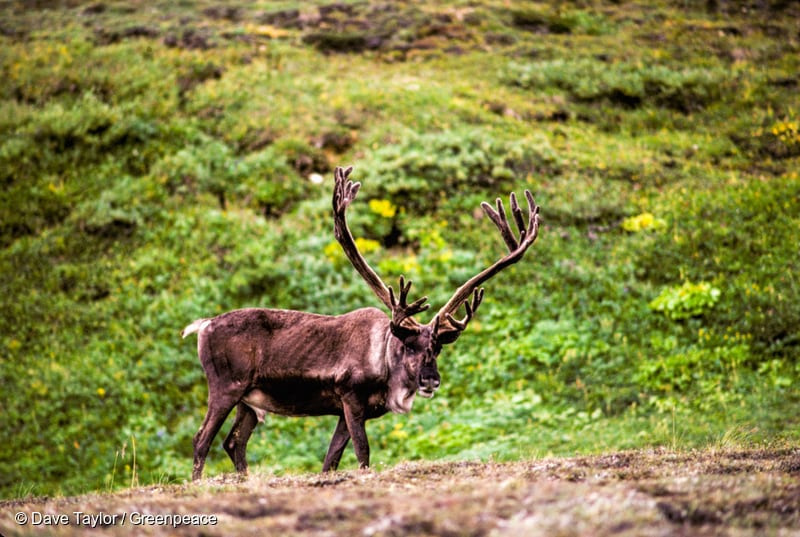
Woodland caribou are a threatened species due to habitat loss and the impacts of roads, logging, mining, and other industrial disturbances.
2. Ruby-throated Hummingbird
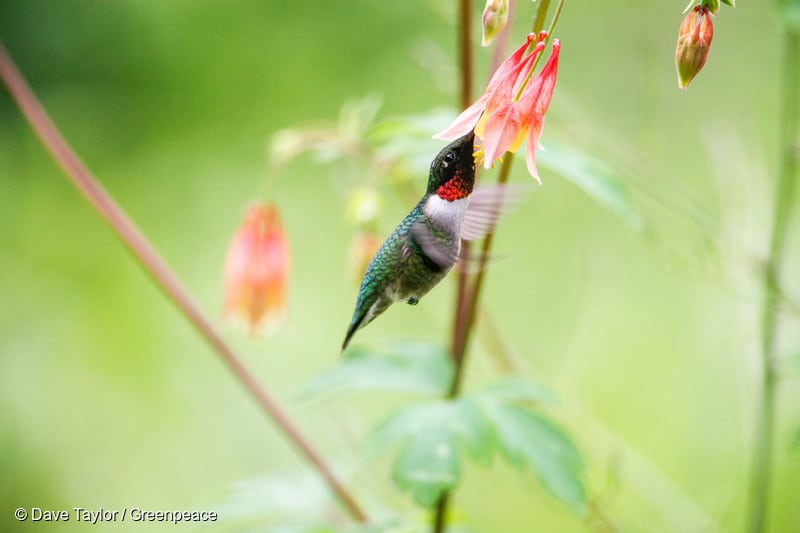
Ruby-throated hummingbirds can beat their wings more than 50 times per second. Despite their size, they migrate from Central America to Canadian forests each year.
3. Red Fox
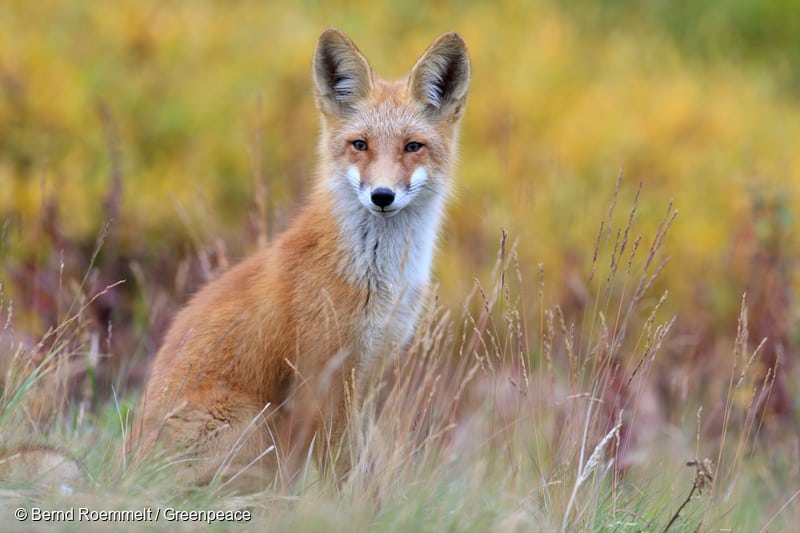
These nocturnal hunters have keen senses, and can even hear small mammals when they are underground. During the breeding season, they construct underground dens. At other times during the year, they live outside in dense vegetation.
4. Monarch Butterfly
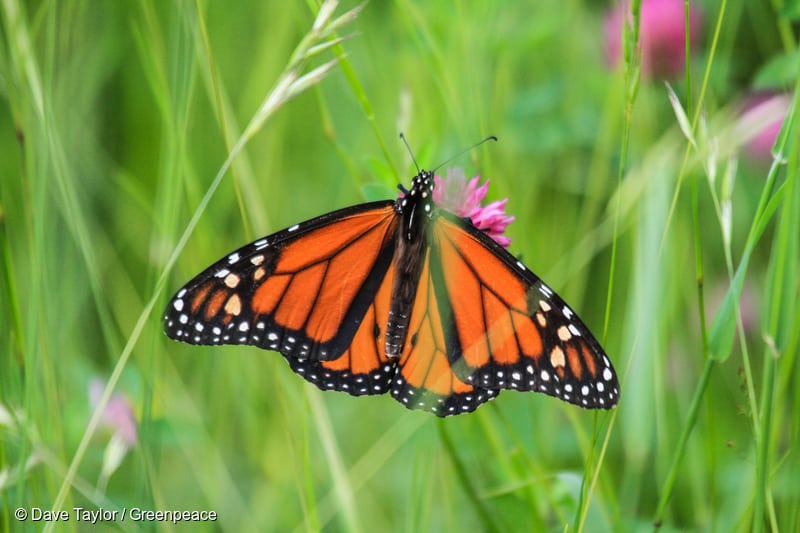
Monarch butterflies can fly at between 20 kilometers and 40 kilometers per hour, and make use of updrafts of warm air called thermals to rise high into the air and slowly glide down. This endangered species has been negatively impacted by herbicides, human disturbances, and predation.
5. Barred Owl
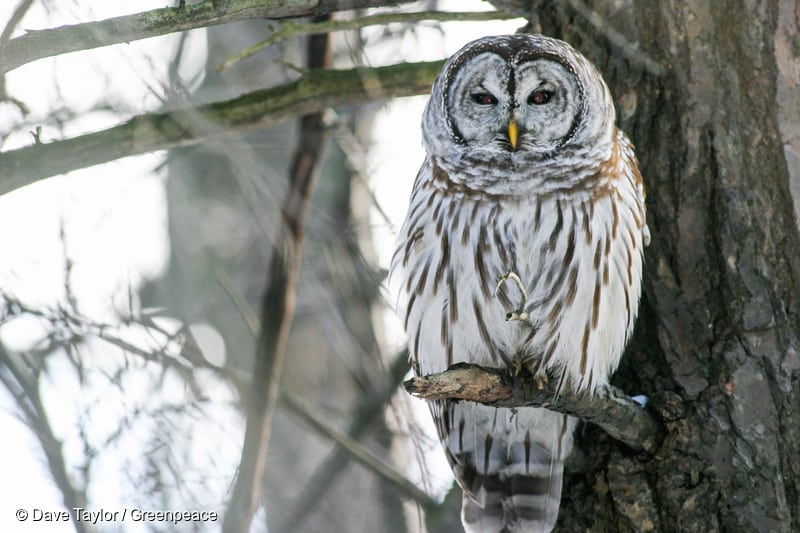
Barred owl (Strix varia).
These 40-centimeter-tall birds are known for their distinctive hoots. They nest in the hollows and cavities of trees, including those created by pileated woodpeckers.
6. American Pine Marten
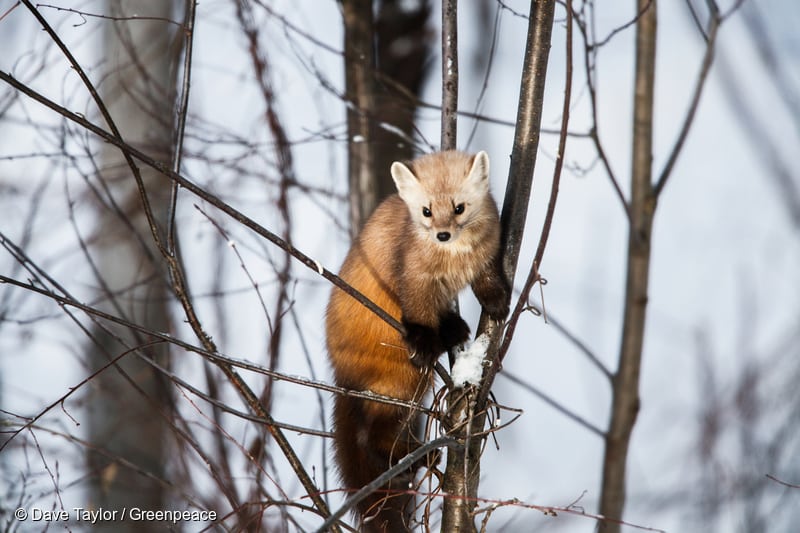
These agile members of the weasel family spend most of their time on the ground, but are skilled at both climbing and swimming. In the winter, they dig tunnels through the snow in search of food, which includes voles, snowshoe hares, insects and vegetation such as fruit.
7. Bald Eagle
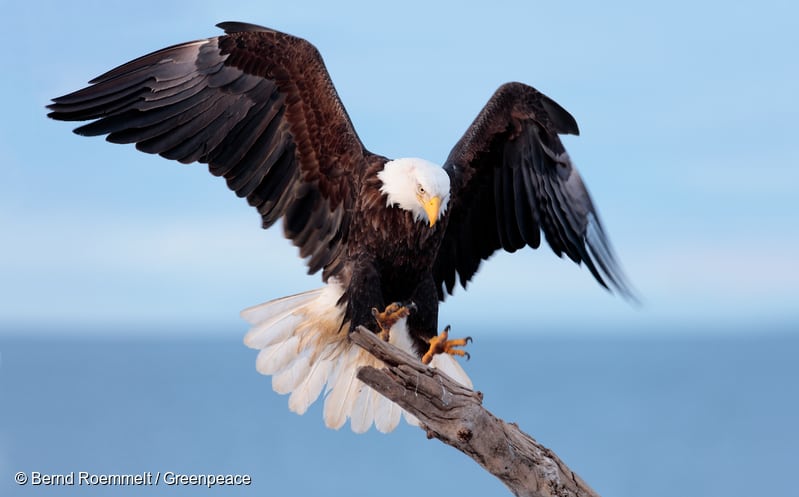
Although this bird is a symbol of the United States, most of their breeding range is found in Canada.
8. Black Bear
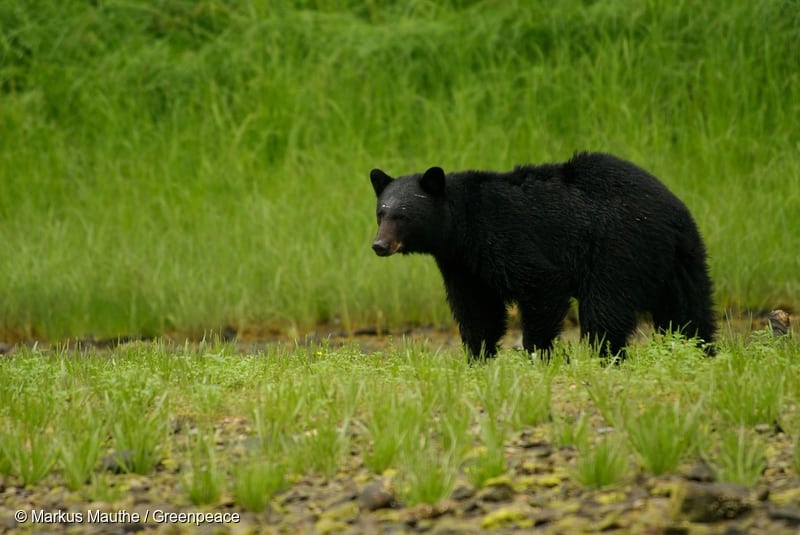
Black bears have better eyesight and hearing than humans. They are known to mark trees with their teeth and claws as a form of communication with other bears.
9. Eastern Chipmunk
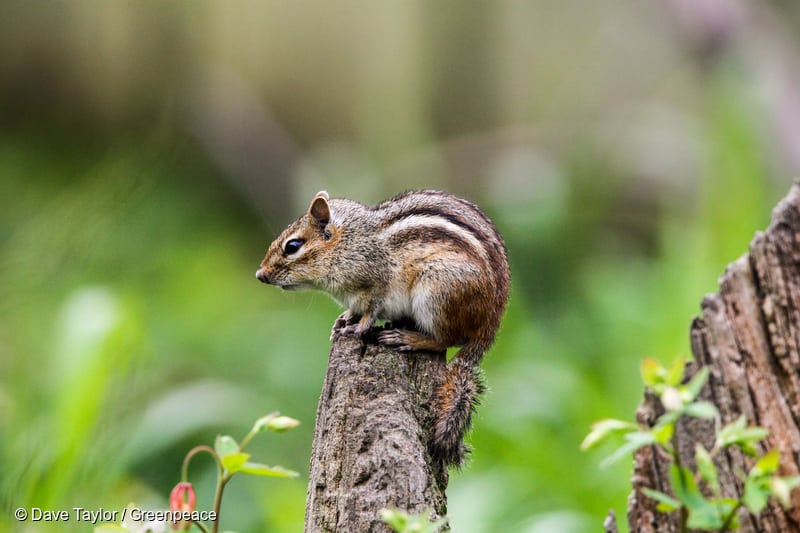
Although chipmunks are expert tree climbers, they dig underground nests. The name chipmunk is derived from the Anishinaabe word ajidamoo, which translates as “one who descends trees headlong.”
10. Wood Bison
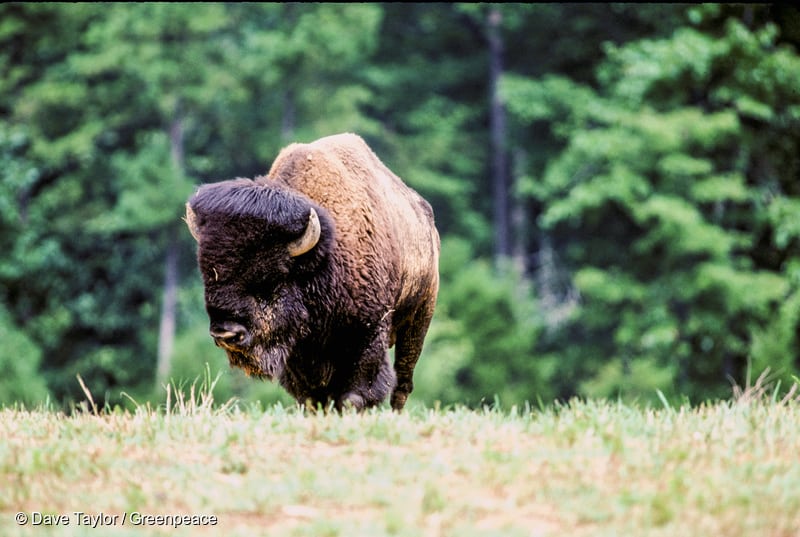
The wood bison, a subspecies of bison, is larger than the plains bison and can be found in the boreal forest from Saskatchewan west. Their population was decimated by overhunting and habitat loss, but due to some recovery their designation was changed from endangered to threatened in 1988. Heavier than a moose, these animals are considered the largest land mammals in North America.
11. Canadian Geese
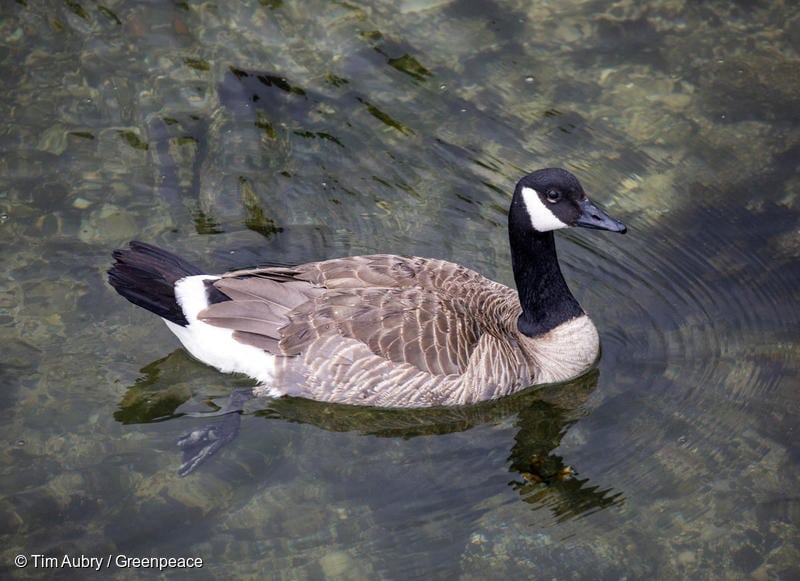
These loud honking geese are almost exclusively vegetarian, but occasionally eat small water creatures and crustaceans. They are monogamous and often stay with their chosen mate throughout their lives.
12. Mountain Lion
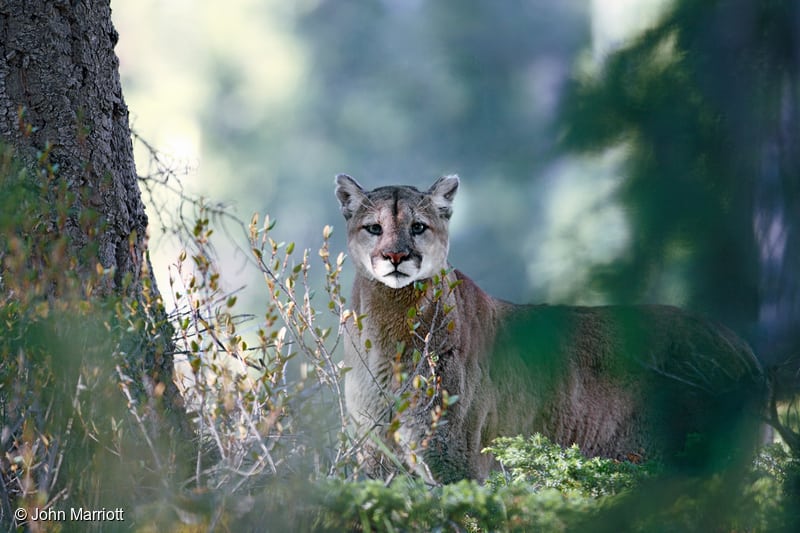
These large, nocturnal cats prey on deer, raccoons, porcupines, foxes, mice, and other small mammals and birds. They are known to hide carcasses of larger animals under leaves and sticks and return later to feed on their cache.
13. Blackburnian Warbler
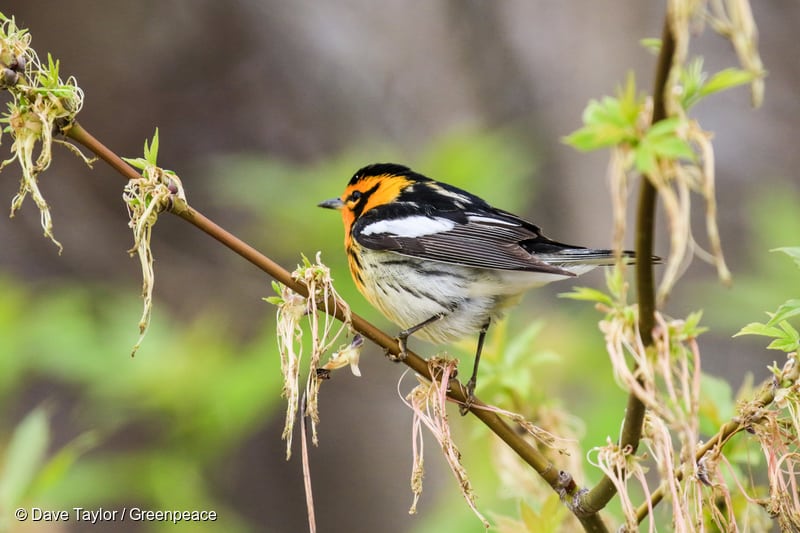
These small songbirds search the tree tops for caterpillars and other insects to feed upon. After their young have fledged, these warblers are known to join flocks of chickadees, nuthatches and kinglets. They migrate from northern forests to Central and South America, where they are vulnerable to habitat loss.
14. Beaver
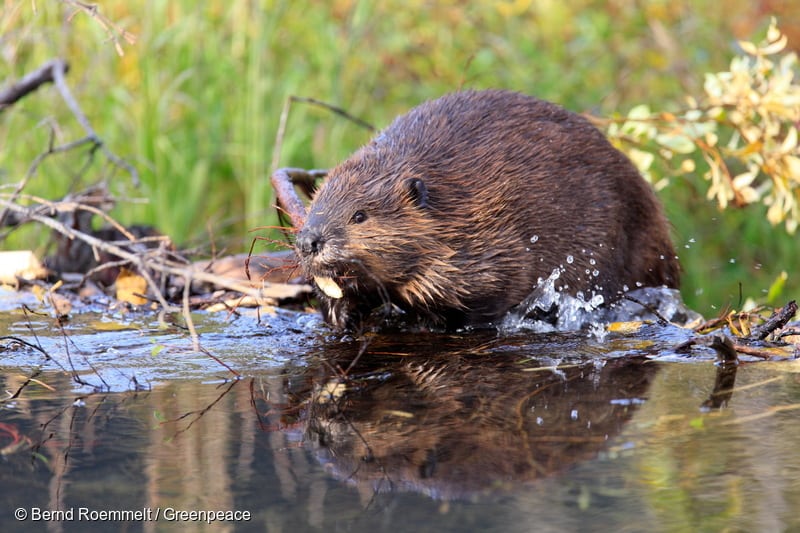
The canals and dams built by these large rodents make them second only to humans in shaping the landscape. The dams not only creates an ideal habitat for the beavers, but also creates wetlands that support the entire ecosystem.
15. Elk
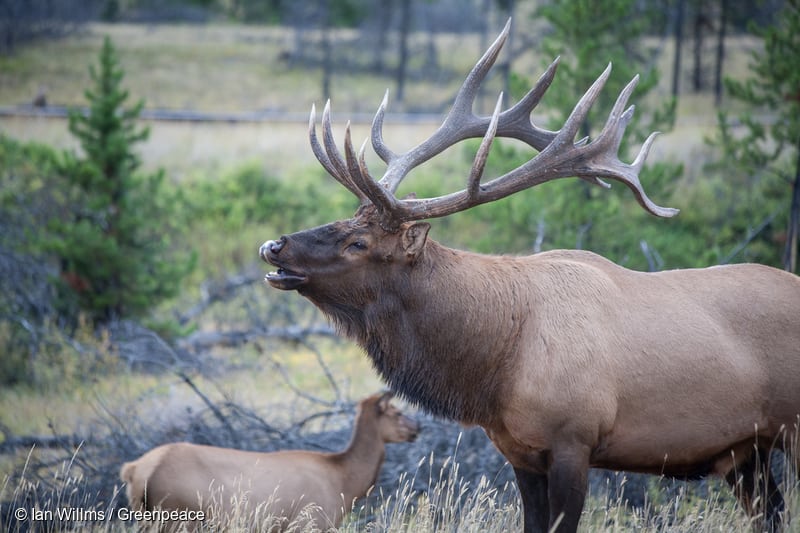
These herbivores are tenacious browsers who feed on grasses and sedges in the summer and migrate to forested areas where they eat tree matter such as twigs, bark, and acorns. These large members of the deer family usually live in herds of ten to 20 members of the same sex, but during their spring migration herds of both sexes join together forming massive herds numbering in the thousands.
16. Grizzly Bear
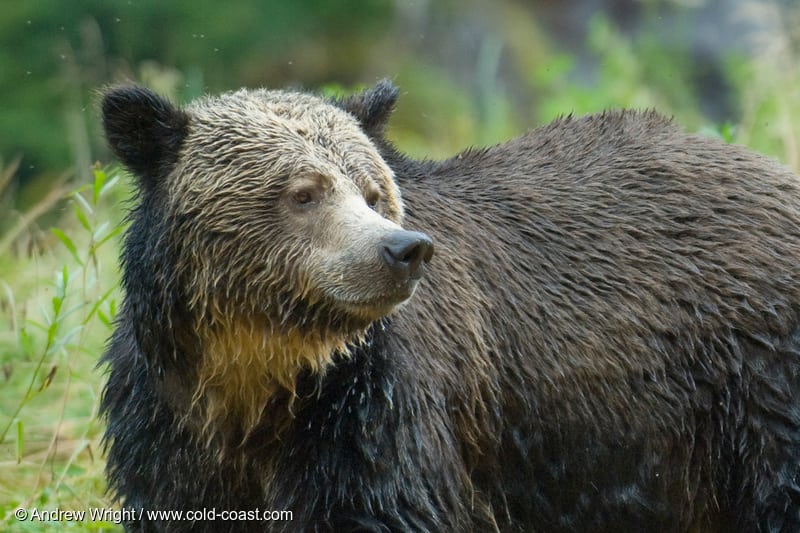
Two Grizzly Bears casually lounge in British Columbia, Canada.
Our voices are vital: don’t let Resolute stop you from speaking out for Canada’s boreal forest.
We want to keep fighting for the environment for decades to come — but in the face of this attack, we need your help to make sure we can. SHARE your support on Facebook and Twitter today to show Resolute that the Greenpeace community won’t back down!
Sign the petition to ask book publishers to stand up for free speech, and protect our forests.

